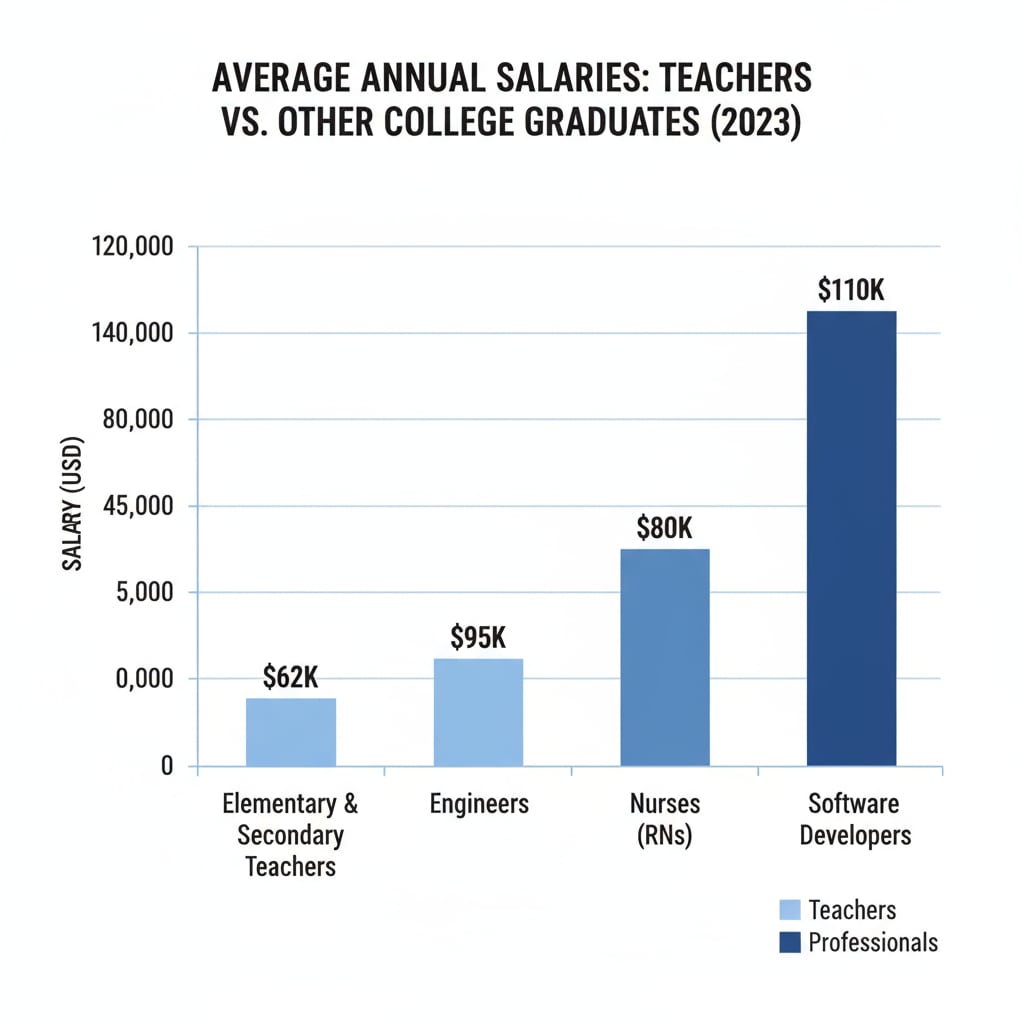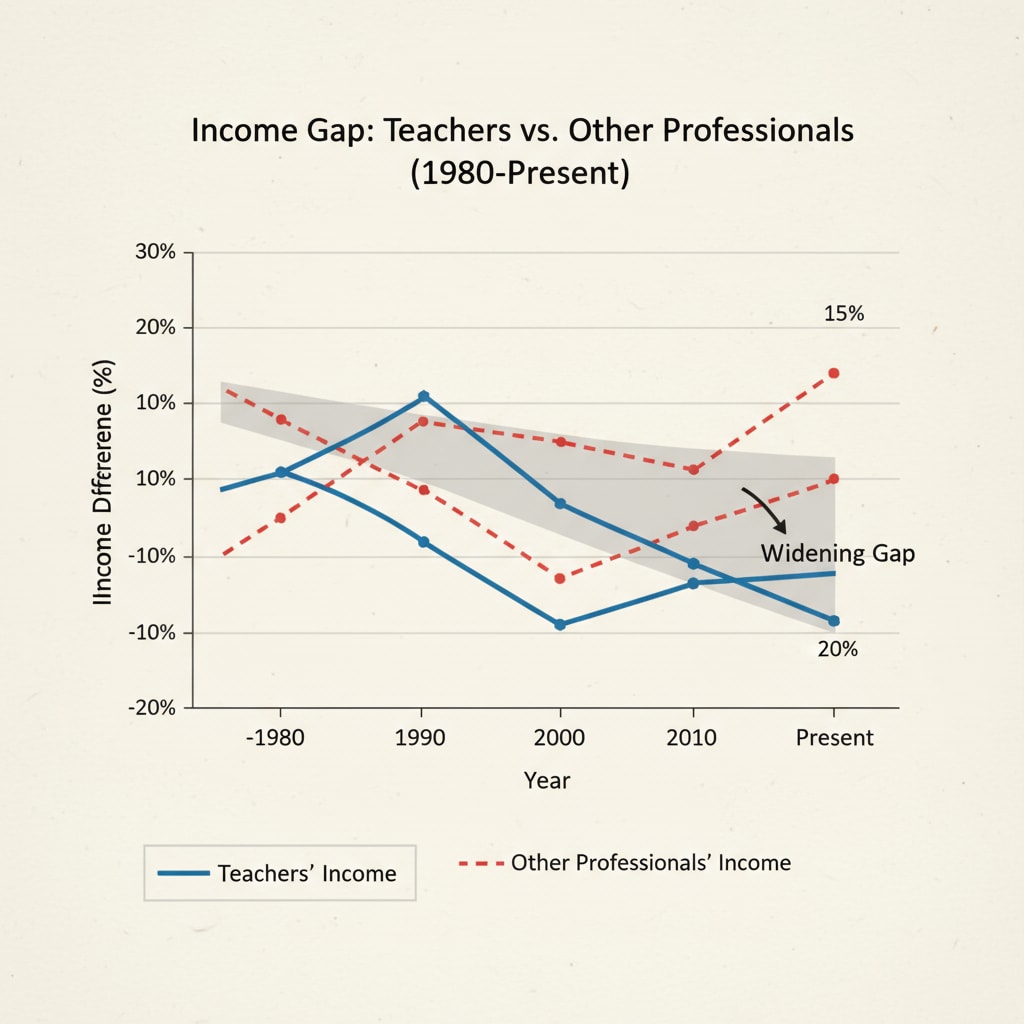The issue of teacher salaries, income gap, and teacher shortage in the United States has become a matter of great concern. Currently, the gap between the earnings of US teachers and other college-graduated professionals has hit an all-time high. For every dollar a teacher earns, other professionals with a college degree can make $1.37. This significant income gap not only reflects the undervaluation of the education profession but also has a direct impact on the availability of qualified teachers nationwide.

The Extent of the Income Gap
The income gap between teachers and other professionals has been steadily increasing over the years. According to data from the Bureau of Labor Statistics Bureau of Labor Statistics official website, in various fields such as technology, finance, and healthcare, college-graduated workers enjoy much higher salaries compared to teachers. This disparity is especially evident when looking at starting salaries. Newly graduated teachers often find themselves earning significantly less than their peers in other professions, despite having similar educational backgrounds.

Reasons Behind the Income Gap
There are several factors contributing to this widening income gap. Firstly, the perception of the education profession has led to a lower valuation in the labor market. Education is often seen as a noble but less financially rewarding career choice. Secondly, the political and economic environment plays a role. Inadequate funding for education at the state and local levels limits the resources available to increase teacher salaries. Additionally, the supply and demand dynamics in the labor market also affect teacher pay. The demand for teachers is high, but the relatively low pay fails to attract enough qualified candidates.
Readability guidance: The key points here are the perception issue, funding limitations, and labor market dynamics. Each of these factors independently contributes to the widening income gap between teachers and other professionals. We use short paragraphs to clearly present these different aspects, and transition words like “firstly”, “secondly”, and “additionally” to smoothly connect the ideas.
The Impact on Teacher Shortage
The growing income gap has directly led to a shortage of qualified teachers. Many talented individuals who might have considered a career in teaching are deterred by the relatively low pay. As a result, schools across the country are facing difficulties in hiring and retaining quality educators. This teacher shortage has a ripple effect on the education system, affecting student learning outcomes and the overall quality of education.
To address this issue, it is crucial to take steps to narrow the income gap between teachers and other professionals. This could involve increasing education funding, advocating for better teacher pay policies, and changing the public perception of the teaching profession. By doing so, we can attract and retain more qualified teachers, ultimately improving the quality of education in the United States.


